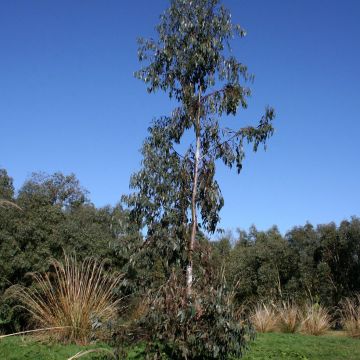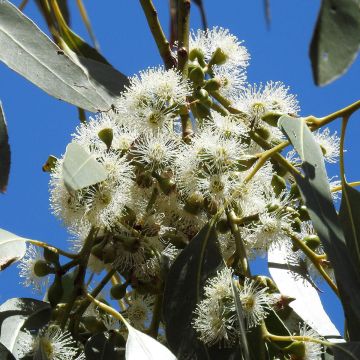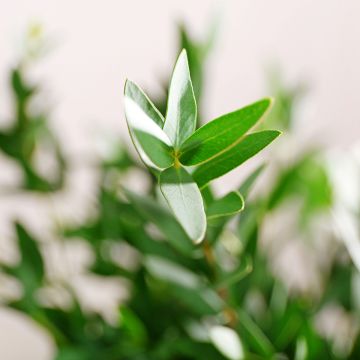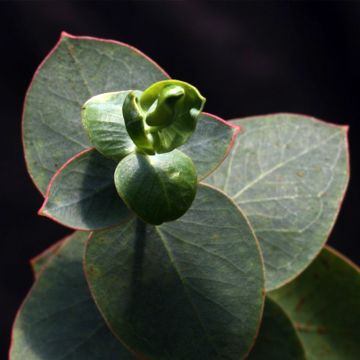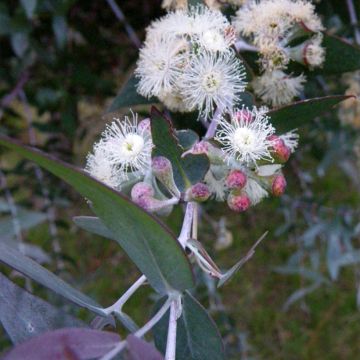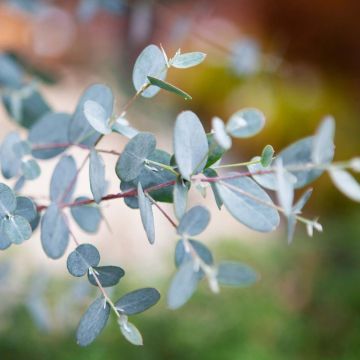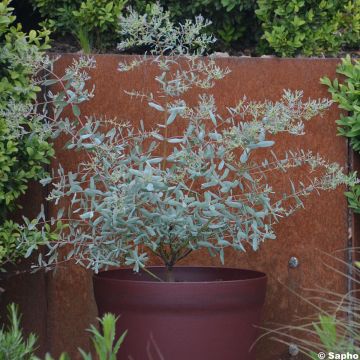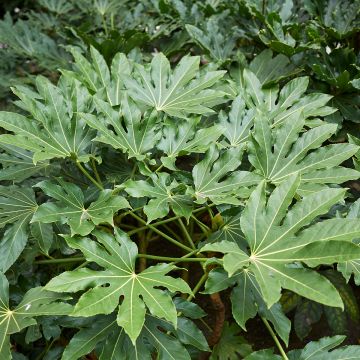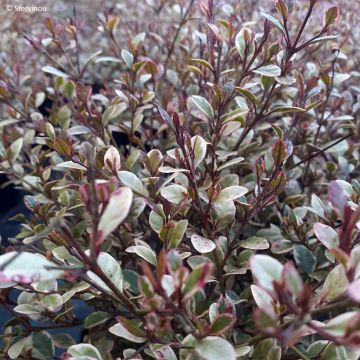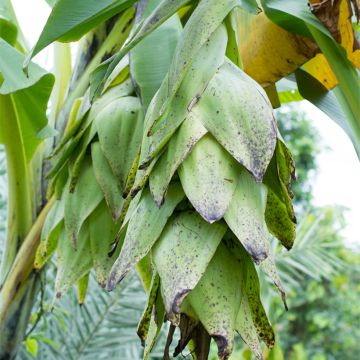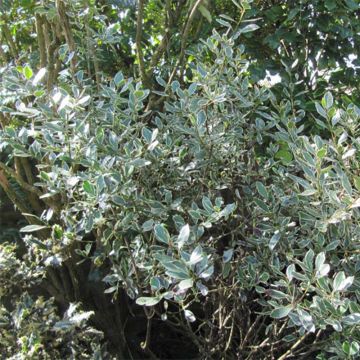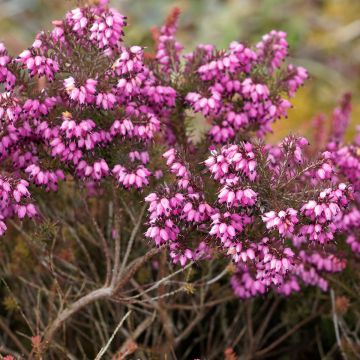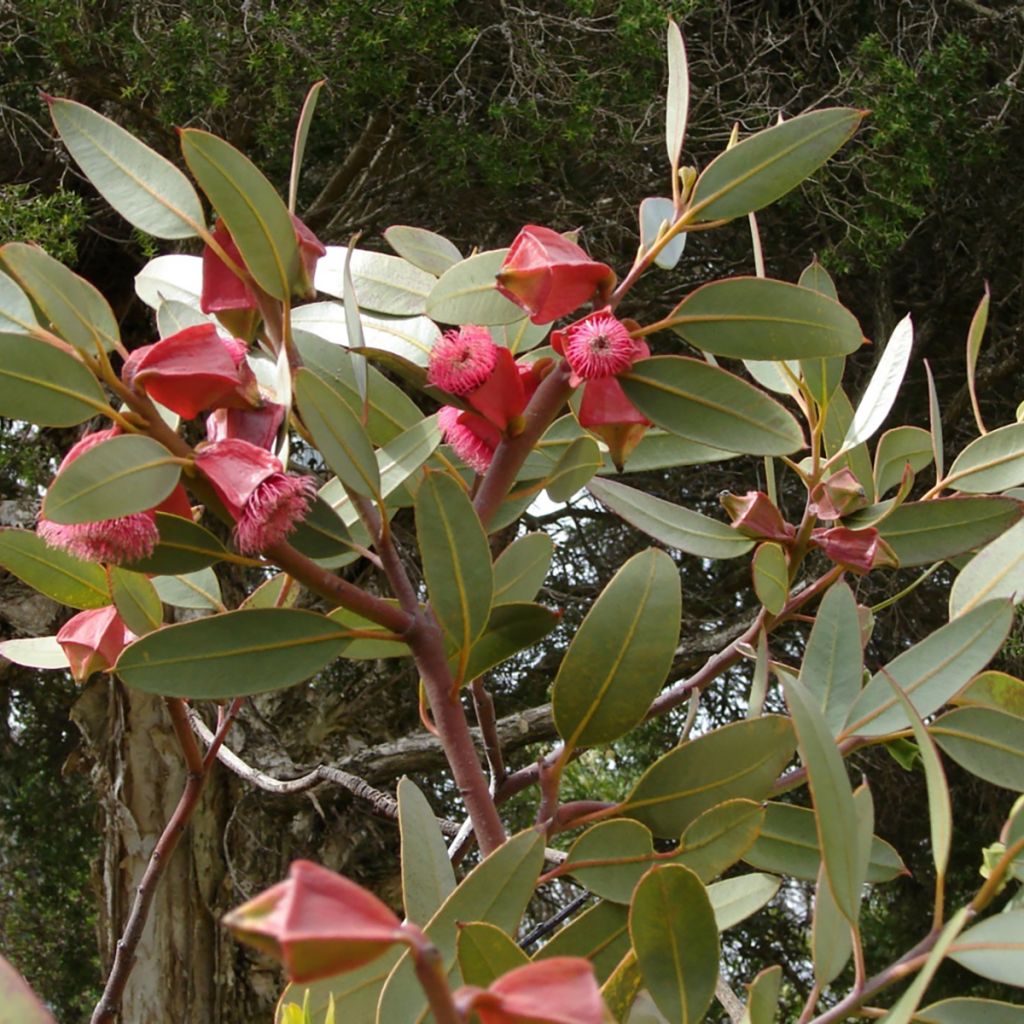

Eucalyptus tetraptera
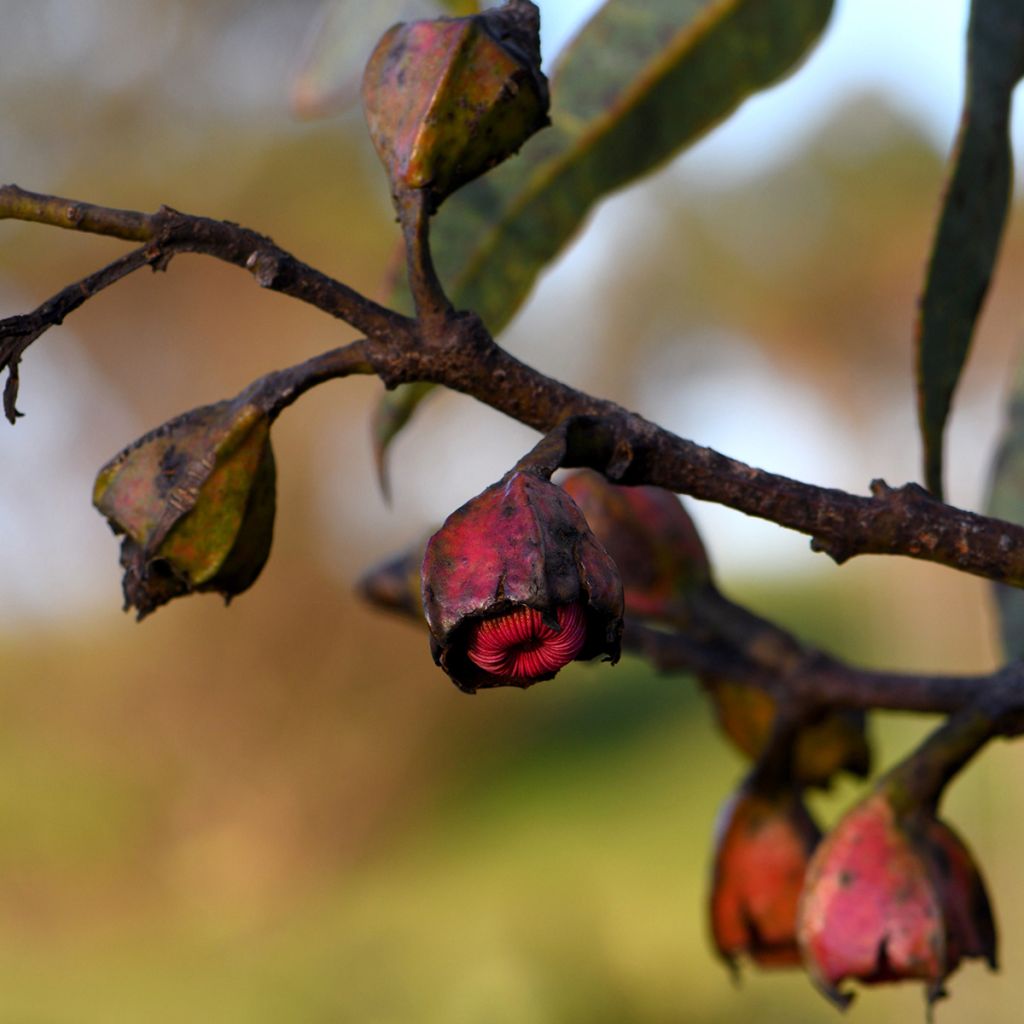

Eucalyptus tetraptera
Eucalyptus tetraptera
Eucalyptus tetraptera
Four-winged Mallee
Special offer!
Receive a €20 voucher for any order over €90 (excluding delivery costs, credit notes, and plastic-free options)!
1- Add your favorite plants to your cart.
2- Once you have reached €90, confirm your order (you can even choose the delivery date!).
3- As soon as your order is shipped, you will receive an email containing your voucher code, valid for 3 months (90 days).
Your voucher is unique and can only be used once, for any order with a minimum value of €20, excluding delivery costs.
Can be combined with other current offers, non-divisible and non-refundable.
Home or relay delivery (depending on size and destination)
Schedule delivery date,
and select date in basket
This plant carries a 24 months recovery warranty
More information
We guarantee the quality of our plants for a full growing cycle, and will replace at our expense any plant that fails to recover under normal climatic and planting conditions.
Would this plant suit my garden?
Set up your Plantfit profile →
Description
Eucalyptus tetraptera is a species native to the southwest of Australia, which loves heat and sun. A small-sized bush with a well-spreading habit, it carries large evergreen leaves of a beautiful slightly varnished green. Its flowering of fuchsia pink leaning towards red is decorative but surpassed by the beauty of the fruits that succeed it. These have a characteristic geometric shape, display a superb, very attractive red colour and persist for a long time on the plant. This small ornamental bush grows well in sandy soil, or sandy-loamy, non-limestone, in sunny exposure, in areas where frost is brief and not very intense.
This bush is a member of the large botanical family of Myrtaceae, which includes about 130 genera distributed in the tropical and warm temperate zones of the globe. The single genus Eucalyptus includes more than 800 species, almost all native to Australia. The Eucalyptus tetraptera comes from an area that extends approximately 600 km (372.8 mi) long in the southwest of Australia. It grows on the coast and at low altitudes, in sandy plains mixed with granite outcrops. It benefits from sunny conditions with hot summers and moderately dry winters.
This Eucalyptus is qualified as Mallee, which has a bushy habit, or is divided into several trunks at ground level with a height less than 10 m (32 ft 10 in). This species generally measures 3 m (9 ft 10 in) in height, occasionally rising up to 5m (16 ft 5 in), but sometimes remaining prostrate when exposed to difficult living conditions. It adopts an open and flared, well-branched habit, often as wide as it is tall. The multiple trunks have a beautiful pale grey to silvery grey bark that falls off at the end of summer. Like some other species of the genus, it has an underground lignotuber, a kind of swelling rich in starch that allows the plant to restart following a fire, or destruction of the aerial part. The axillary buds located on the lignotuber then start to grow, generating several stems.
Another distinctive sign of this Eucalyptus is its foliage, with leaves among the thickest of all. The young ovate to elliptical leaves measure approximately 5 to 12 cm (2 to 4.7 in) long by 2.5 to 7 cm (1 to 2.8 in) wide. The adult foliage is characterised by surprisingly large leaves compared to the size of the bush, as they reach 9 to 20, even 28 cm (11 in) in length and 3 to 7.5 cm (1.2 to 3 in) in width. Longer than the juvenile ones, they are carried by petioles 2 to 4.5 cm (0.8 to 1.8 in) long, and arranged alternately. These tough leaves have a beautiful green colour with a varnished appearance, which is a double adaptation to semi-arid climates. They are evergreen and decorative year-round and constitute a beautiful setting for the dark pink, almost red, flowering at the end of spring and beginning of summer. The solitary axillary flowers have no petiole, and show a bouquet of slightly protruding stamens. The resulting fruits have a very geometric shape, with 4 prominently marked wings, which gives this species its vernacular name of square-fruited Mallee, or four-winged Mallee. These fruits measure up to 5.5 cm (2.2 in) long and as wide (wings included), of a bright red colour that, combined with their size, makes them highly visible and aesthetic for many months. They then gradually darken over time...
Highly ornamental, this small-sized Eucalyptus is well adapted to warm temperate climates, like those of the Mediterranean. Its frost resistance is quite low, around -5°C (23 °F).
Very original with its extremely decorative fruits, Eucalyptus tetraptera will be content with little, showing tolerance to the soil, which can be sandy, even poor, and water, tolerating dry conditions well. In a southern garden, you can associate it in a sunny bed with Arbutus unedo Rubra, a dwarf form of Strawberry Tree which combines numerous assets, from the evergreen dark green foliage, to pretty pink flowering, often cohabiting with the fruits first yellow, then red. Add to this an ornamental reddish bark and you have a beautiful ensemble with our little Eucalyptus. A mat of Senecio mandraliscae, a crassula-like ground cover whose foliage takes on incredible blue colours, will create a surprising contrast with these bushes.
Report an error about the product description
Eucalyptus tetraptera in pictures
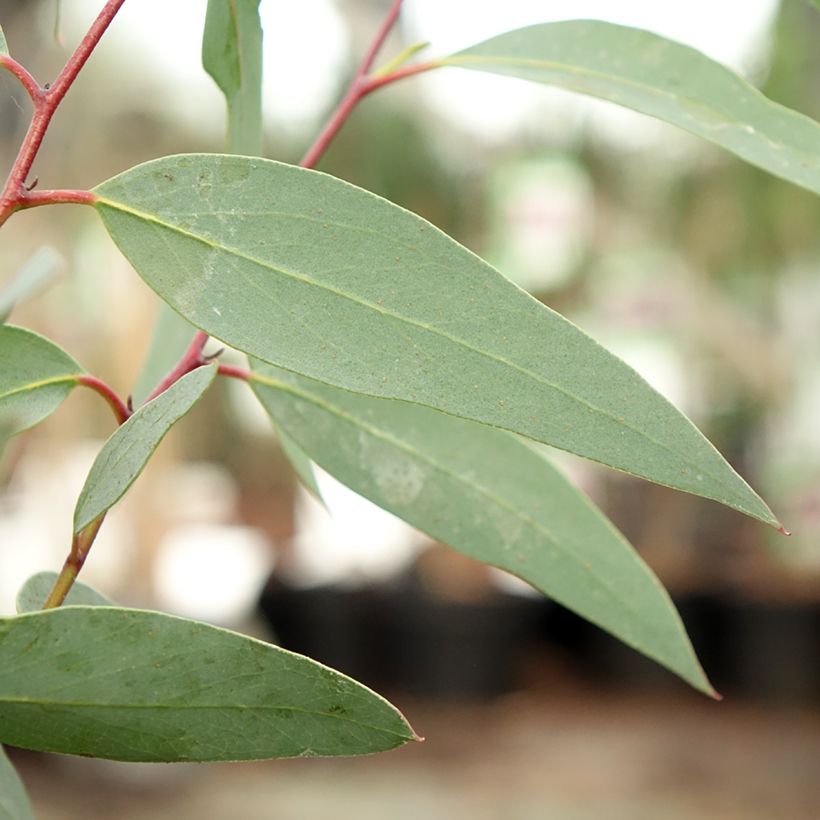

Plant habit
Flowering
Foliage
Botanical data
Eucalyptus
tetraptera
Myrtaceae
Four-winged Mallee
Australia
Other Eucalyptus
View all →Planting and care
Eucalyptus tetraptera is not very hardy and should be planted in the spring after the last frosts in order to adequately develop its root system before winter. It requires well-drained soil, even sandy, as it tolerates dryness quite well, but no excess water, especially in winter. A neutral to slightly acidic soil will suit it well, but not limestone. Hardy to -4°C (24.8 °F) or -5°C (23 °F) only, it can reasonably only be planted where it will benefit from good sunshine and mild winters.
For planting, plan a hole of 40 cm (15.7 in) in all directions, and if the soil is heavy, add a draining layer of gravel at the bottom. Water well when planting, then for the first two years. After that, it should manage on its own. There is no need for pruning or fertilising it, it tolerates poor soils well.
Planting period
Intended location
Care
This item has not been reviewed yet - be the first to leave a review about it.
Similar products
Haven't found what you were looking for?
Hardiness is the lowest winter temperature a plant can endure without suffering serious damage or even dying. However, hardiness is affected by location (a sheltered area, such as a patio), protection (winter cover) and soil type (hardiness is improved by well-drained soil).

Photo Sharing Terms & Conditions
In order to encourage gardeners to interact and share their experiences, Promesse de fleurs offers various media enabling content to be uploaded onto its Site - in particular via the ‘Photo sharing’ module.
The User agrees to refrain from:
- Posting any content that is illegal, prejudicial, insulting, racist, inciteful to hatred, revisionist, contrary to public decency, that infringes on privacy or on the privacy rights of third parties, in particular the publicity rights of persons and goods, intellectual property rights, or the right to privacy.
- Submitting content on behalf of a third party;
- Impersonate the identity of a third party and/or publish any personal information about a third party;
In general, the User undertakes to refrain from any unethical behaviour.
All Content (in particular text, comments, files, images, photos, videos, creative works, etc.), which may be subject to property or intellectual property rights, image or other private rights, shall remain the property of the User, subject to the limited rights granted by the terms of the licence granted by Promesse de fleurs as stated below. Users are at liberty to publish or not to publish such Content on the Site, notably via the ‘Photo Sharing’ facility, and accept that this Content shall be made public and freely accessible, notably on the Internet.
Users further acknowledge, undertake to have ,and guarantee that they hold all necessary rights and permissions to publish such material on the Site, in particular with regard to the legislation in force pertaining to any privacy, property, intellectual property, image, or contractual rights, or rights of any other nature. By publishing such Content on the Site, Users acknowledge accepting full liability as publishers of the Content within the meaning of the law, and grant Promesse de fleurs, free of charge, an inclusive, worldwide licence for the said Content for the entire duration of its publication, including all reproduction, representation, up/downloading, displaying, performing, transmission, and storage rights.
Users also grant permission for their name to be linked to the Content and accept that this link may not always be made available.
By engaging in posting material, Users consent to their Content becoming automatically accessible on the Internet, in particular on other sites and/or blogs and/or web pages of the Promesse de fleurs site, including in particular social pages and the Promesse de fleurs catalogue.
Users may secure the removal of entrusted content free of charge by issuing a simple request via our contact form.
The flowering period indicated on our website applies to countries and regions located in USDA zone 8 (France, the United Kingdom, Ireland, the Netherlands, etc.)
It will vary according to where you live:
- In zones 9 to 10 (Italy, Spain, Greece, etc.), flowering will occur about 2 to 4 weeks earlier.
- In zones 6 to 7 (Germany, Poland, Slovenia, and lower mountainous regions), flowering will be delayed by 2 to 3 weeks.
- In zone 5 (Central Europe, Scandinavia), blooming will be delayed by 3 to 5 weeks.
In temperate climates, pruning of spring-flowering shrubs (forsythia, spireas, etc.) should be done just after flowering.
Pruning of summer-flowering shrubs (Indian Lilac, Perovskia, etc.) can be done in winter or spring.
In cold regions as well as with frost-sensitive plants, avoid pruning too early when severe frosts may still occur.
The planting period indicated on our website applies to countries and regions located in USDA zone 8 (France, United Kingdom, Ireland, Netherlands).
It will vary according to where you live:
- In Mediterranean zones (Marseille, Madrid, Milan, etc.), autumn and winter are the best planting periods.
- In continental zones (Strasbourg, Munich, Vienna, etc.), delay planting by 2 to 3 weeks in spring and bring it forward by 2 to 4 weeks in autumn.
- In mountainous regions (the Alps, Pyrenees, Carpathians, etc.), it is best to plant in late spring (May-June) or late summer (August-September).
The harvesting period indicated on our website applies to countries and regions in USDA zone 8 (France, England, Ireland, the Netherlands).
In colder areas (Scandinavia, Poland, Austria...) fruit and vegetable harvests are likely to be delayed by 3-4 weeks.
In warmer areas (Italy, Spain, Greece, etc.), harvesting will probably take place earlier, depending on weather conditions.
The sowing periods indicated on our website apply to countries and regions within USDA Zone 8 (France, UK, Ireland, Netherlands).
In colder areas (Scandinavia, Poland, Austria...), delay any outdoor sowing by 3-4 weeks, or sow under glass.
In warmer climes (Italy, Spain, Greece, etc.), bring outdoor sowing forward by a few weeks.
































